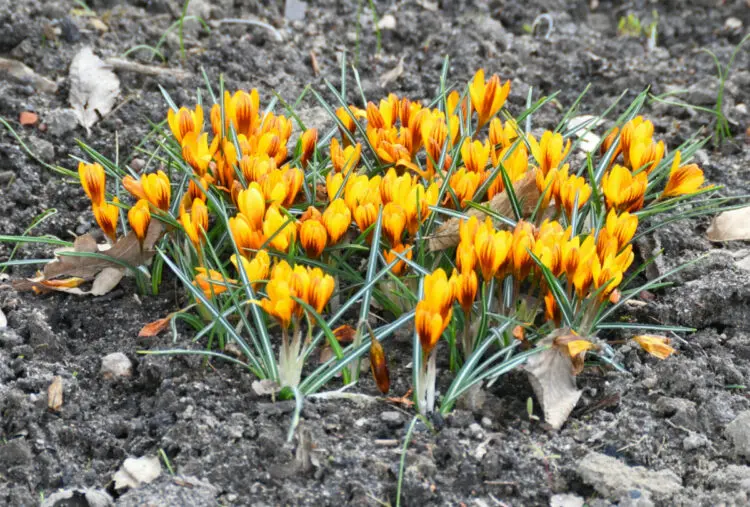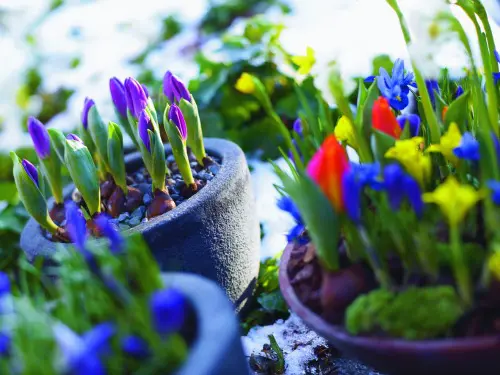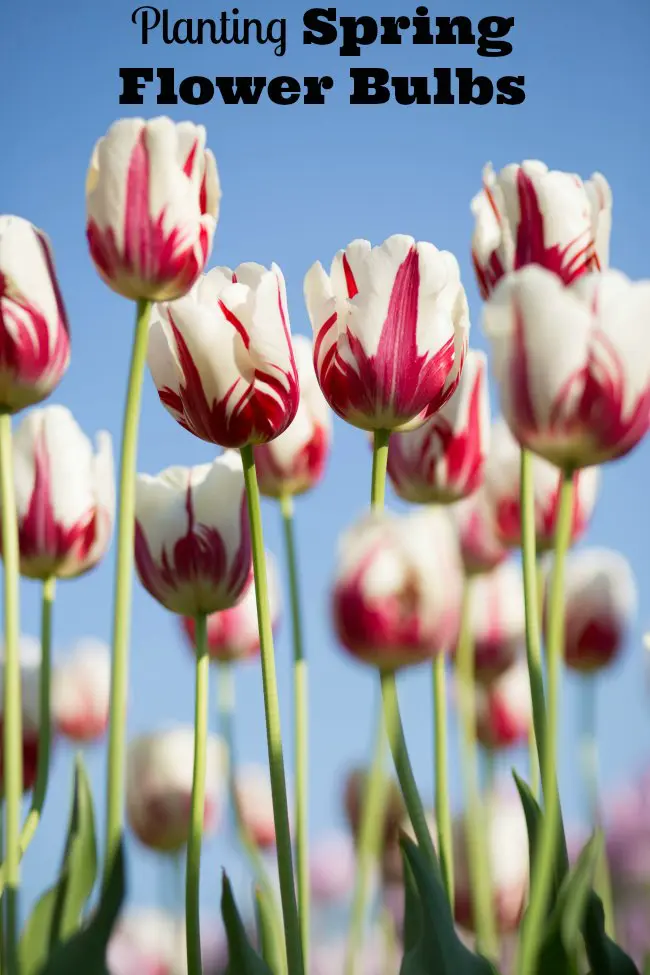With spring upon us, there’s no better time to have some green-fingered fun with flowering bulbs, at the same time bringing some color into our homes. The end of March and through into April is the best time of the year to enjoy flowering spring bulbs, with everything from fragrant Muscari – also known as grape hyacinths – through to daffodils, a crocus or two, and tulips now available at pocket-money prices. And, with flowers in bud, ready to burst into colorful life, planting spring flower bulbs is a great way to introduce children to the highly rewarding and fun world of organic gardening.
Summer gardens truly come alive with the vibrant colors and dramatic blooms of summer-flowering bulbs like dahlias, gladiolus, lilies, and begonias. Unlike spring bulbs that fade as the weather warms, these beauties thrive in the heat, rewarding you with months of show-stopping flowers. Whether you’re looking to add height with towering gladiolus spikes, bring bold color with dinner-plate dahlias, or create lush containers brimming with begonias, summer-blooming bulbs are an easy way to transform your outdoor space into a dazzling display. With just a little planning and care, you’ll enjoy continuous bursts of color from early summer through the first frost.
When To Plant Flower Bulbs
When To Plant Flower Bulbs For Spring
As for when to plant spring bulbs, it’s best to plant them in the fall, ideally before the first frost. This allows the bulbs to establish roots before the winter and bloom in the spring. The exact planting time can vary depending on your climate and the specific type of bulb, so it’s a good idea to check the planting instructions for the bulbs you have. Pick a spot in your garden that receives plenty of sunlight and has well-draining soil. Avoid areas that tend to stay wet or soggy.
If you are getting a late start don’t be discouraged. You can still plant flower bulbs in the spring. For this last minute planting they do great in pots. Planting bulbs in containers is a great way to enjoy spring blooms in a limited space or if you don’t have a garden. Planting spring bulbs is a great way to add color and beauty to any garden. Bulbs will com back year and year and as their roots get a chance to develop, their blooms will be even more plentiful.
When To Plant Flower Bulbs For Summer
For summer-blooming bulbs like dahlias, gladiolus, lilies, and begonias, timing is everything! You’ll want to plant them in spring after the danger of frost has passed and the soil has warmed to about 60°F (15–16°C). Most gardeners aim for April through early June, depending on the climate zone.
How To Get Started With Planting Spring Flower Bulbs
Pick Your Favorite Flower Bulbs
Perhaps the easiest way to start a flower garden is to buy a selection of different spring flowering bulbs and a bag of potting soil from a florist shop or garden center. For an extra dimension, look for plants with a strong fragrance. Muscari, hyacinths, lily of the valley and some daffodils – most notably paperwhites – are good options and widely available. For easy growing flowers with good colors, amaryllis bulbs also make a great addition to your garden. Here are a few flowers that have bulbs.
Fall Bulbs For A Spring Garden
- Hyacinth – Plant in the fall. Well-drained soil in full to partial sun.
- Allium – Plant in the fall, at the same time as tulips and daffodils. They need the winter chill to bloom beautifully.
- Dutch Irises – Plant them in fall, at the same time you would plant tulips or daffodils. They’ll bloom in spring.
- Tulip – Plant tulip bulbs in fall for early spring bloom time.
- Daffodil – Plant daffodils (Narcissus) in fall. They do best in full sun to partial shade.
- Snowdrops – Plant in the fall. This allows the bulbs to root during the cool months and be ready to bloom as early as late winter or very early spring.

Spring Bulbs For A Summer Garden
- Crocus- Look for fall-blooming crocuses (like the saffron crocus). Those are planted in late summer to bloom in autumn.
- Dahlias – Plant in the spring once soil is warm and nights are consistently above 50°F.
- Lilies – Best planted in spring or fall, but spring planting still works for summer flowers.
- Gladiolus – Stagger plantings every 2 weeks from spring into early summer for continuous blooms.
- Coppertips – Plant in the spring, after the soil warms and the danger of frost has passed (similar timing to gladiolus and dahlias).
- Begonias – Start tubers indoors 6–8 weeks before the last frost, then transplant outside when the weather is settled and warm.
- Calla Lilies – Plant in the spring in rich, moist but well-drained soil. Summer to early fall, depending on planting time and variety.
Get Some Planters
Choose a container with good drainage holes at the bottom. The size of the container will depend on the number of bulbs you want to plant. Ensure the container is large enough to accommodate the bulbs and has enough room for root growth. Use a well-draining potting mix suitable for bulbs. You can also mix in some perlite or coarse sand to improve drainage.
Then the real fun begins – choosing the pots for planting spring flower bulbs! For a colorful theme, you can arrange half a dozen different flowers together in one planter by the door. Local florist shops, home stores and garden centers will be able to help with the supply of containers in all shapes, colors and sizes. Of course, children love to decorate their own pot, so that’s another option. Reach for the pens, paint and accessories such as ribbon, sisal and stickers. There’s no limit to your creativity here!
How To Plant Bulbs
When it comes to planting spring flower bulbs, half-fill the chosen container with a rich potting soil and then carefully ease the flowering bulbs out of their plastic pots. A good tip here is to place the stem of the flower between your middle and ring finger, with your fingers covering the soil, before turning the pot over, giving the pot a little squeeze and (hopefully) easily sliding the bulb flower out. The flowers can then be added to the container, which should be topped up with potting soil and gently firmed down. Now, water well to help settle the bulbs in their new home and release any air pockets.
If you are planting spring flower bulbs that are not yet growing, you will need to plant them about 3-6 inches below the soil level. Plant bulbs at the appropriate depth and spacing. As a general rule, plant bulbs at a depth equal to three times their height. Space them according to the planting instructions provided on the packaging. Place the bulbs in the container, pointed end up, and cover them with more potting mix.
Place the container in a location that receives at least 6-8 hours of sunlight per day. By planting bulbs in containers, you can enjoy beautiful spring blooms even if you don’t have a garden. Just remember to choose the right bulbs, containers, and soil, and provide the bulbs with the care they need to thrive.
Pro Tips For Planting Bulbs
Plant at the Right Depth
- A good rule of thumb: plant bulbs 2–3 times as deep as their height. Too shallow and they may topple; too deep and they may struggle to emerge.
Point the Right Way Up
- The pointy end (shoot side) faces up, and the flat/basal plate (root side) faces down. If in doubt, plant sideways — the bulb will correct itself.
Group for Impact
- Plant bulbs in clusters or drifts of 5–15 rather than single rows for a natural, dramatic display.
Conclusion
Planting spring flower bulbs is a simple, cost-effective way (because they come back each year) of bringing color into your garden, onto your balcony, patio or windowsill and, of course, a brilliant way to have fun and introduce children to the wonderful world of gardening. Most flower bulbs such as tulips are perennial which means they will flower each year without having to be replanted. So, perhaps, it’s something you’d like to do next weekend…
What are your favorite types of spring flower bulbs? Do you think you will try planting flower bulbs?
Related Posts:
Adorable DIY Painted Flower Pots Craft for Kids



Robin (Masshole Mommy) says
Great post. I remember planting tulips with my dad when I was a kid and it’s something I would definitely like to do with my own kids someday!
Shaunda Wenger says
The great thing about bulbs is the color they bring year after year. I especially like those that pop up in spring before anything else is really green. Purple crocuses were first. Now we have daffodils. Of course, today they are covered in a new layer of snow, of all things. But amazingly, they will survive and keep blooming, despite their frosty feet! 🙂
Thanks for sharing!